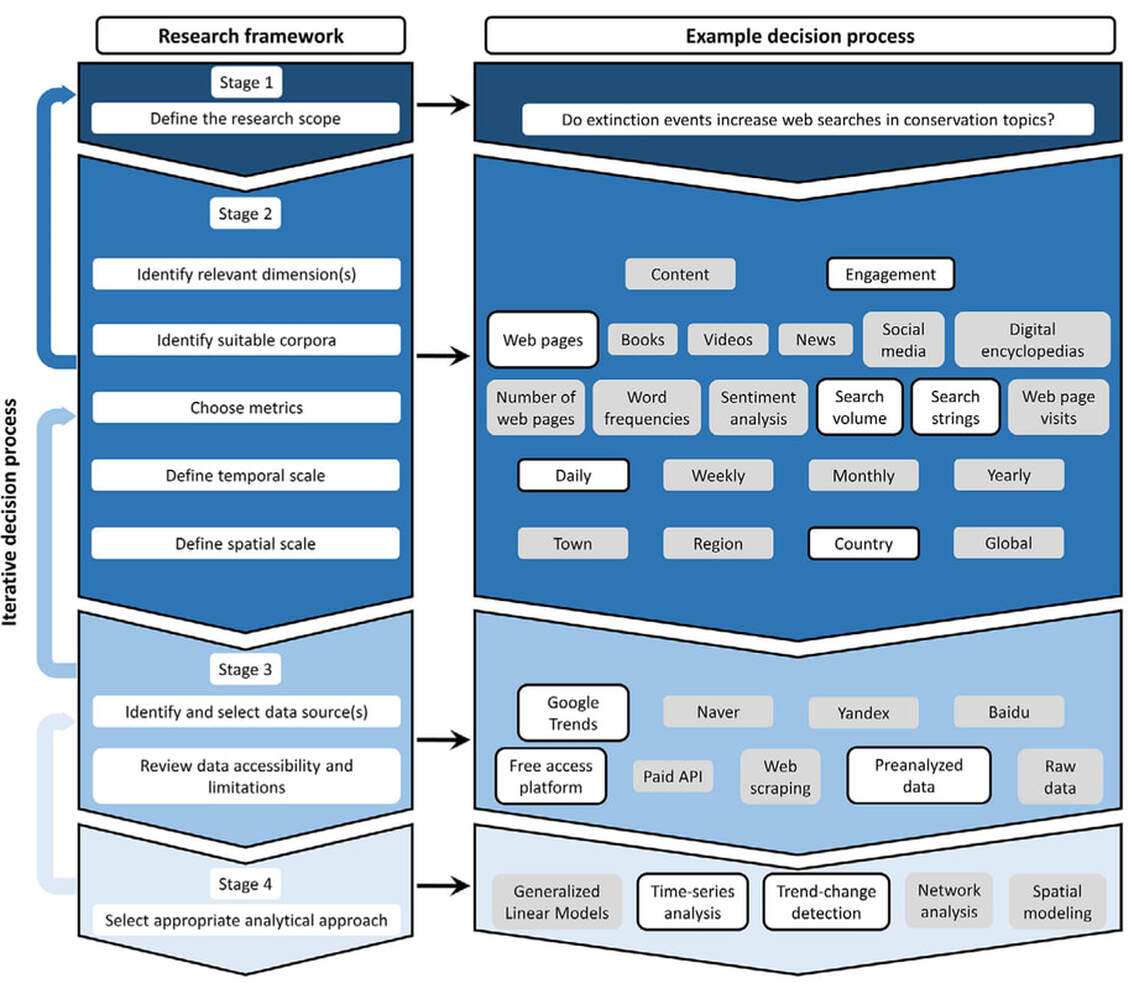conservation culturomics research framework
Conservation culturomics aims to analyze the digital data generated by people to provide novel insights on human–nature interactions for conservation. The most common application of conservation culturomics so far has been to explore temporal and spatial dynamics of public interest in conservation-related topics. Multiple studies have assessed these dynamics over long periods or in response to specific events such as conservation interventions, news, movies, and nature documentaries. Other common applications of culturomics to conservation include identifying culturally salient species and sites and investigating preferences for nature-based recreation. There are also a number of other topics in which the use of culturomics approaches for conservation is now developing rapidly, including biological invasions, illegal wildlife trade, and human–wildlife conflict.
Culturomics research is influenced by emerging data intensive scientific paradigms. Data-driven science draws heavily on statistical exploration and data-mining techniques to help identify questions and hypotheses worthy of further inquiry. As such, culturomics research is typically a highly iterative process in which decisions regarding the research scope, data characteristics,
accessibility, and analytical methods are revisited frequently.
accessibility, and analytical methods are revisited frequently.
We summarized the main stages of this decision-making process in the conservation culturomics research framework.
More information on this research framework can be found in Correia et al. 2021.
More information on this research framework can be found in Correia et al. 2021.
Four key stages of the iterative process of conservation culturomics research design:
- Stage 1 - define the research scope
- Stage 2 - select the relevant corpora for analysis
- Stage 3 - identify possible data sources and data extraction
- Stage 4 - analyze data

